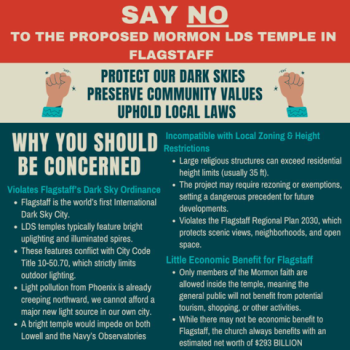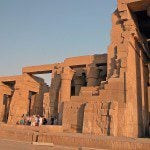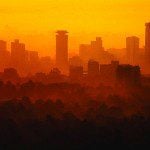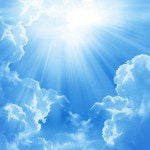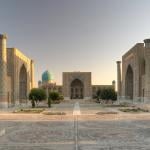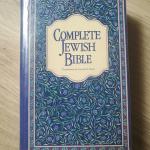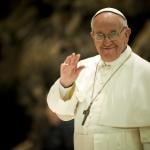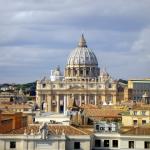
***
I’ve been quite busy today, and I haven’t been at my computer very much. Here, though, are links to five articles that you might find of interest and that were published in a prior issue of Interpreter: A Journal of Latter-day Saint Faith and Scholarship:
William J. Hamblin, “The Sôd of Yhwh and the Endowment”
Abstract: Most scholars agree that sôd, when used in relationship to God, refers to the heavenly council, which humans may sometimes visit to learn divine mysteries or obtain a prophetic message to deliver to humankind. Biblical texts on this subject can be compared to passages in Latter-day Saint scripture (e.g., 1 Nephi 1:8-18; Abraham 3:22-23). In this article, William Hamblin succinctly summarizes this concept and argues that the Latter-day Saint temple endowment serves as a ritual and dramatic participation in the divine council of God, through which God reveals to the covenanter details of the plan of salvation — the hidden meaning and purpose of creation and the cosmos.
[Editor’s Note: Part of our book chapter reprint series, this article is reprinted here as a service to the LDS community. Original pagination and page numbers have necessarily changed, otherwise the reprint has the same content as the original.
See William J. Hamblin, “The Sôd of Yhwh and the Endowment,” in Ancient Temple Worship: Proceedings of The Expound Symposium 14 May 2011, ed. Matthew B. Brown, Jeffrey M. Bradshaw, Stephen D. Ricks, and John S. Thompson (Orem, UT: The Interpreter Foundation; Salt Lake City: Eborn Books, 2014), 189–94. Further information at https://interpreterfoundation.org/books/ancient-temple-worship/.]
Abstract: Chapters from Isaiah quoted in the Book of Mormon use the King James Bible as a base text yet frequently vary from it in minor ways, particularly in the earliest text of the Book of Mormon. A disproportionate number of these variants are due to the omission or replacement of words italicized in the KJV. Many of the minor variants were eliminated by the printer for the 1830 edition or by Joseph Smith himself for the 1837 edition, but others remain. Some of the minor variants are easily explained as errors of dictation, transcription, or copying, but others are not so readily accounted for. While some are inconsequential, others negatively affect Isaiah’s text by confusing its meaning or violating grammatical norms. Most have no clear purpose. The disruptive character of these variants suggests they are secondary and were introduced by someone who was relatively uneducated in English grammar and unfamiliar with the biblical passages being quoted. They point to Joseph Smith, the unlearned man who dictated the Book of Mormon translation. Even so, it seems unlikely that a single individual would have intentionally produced these disruptive edits. They are better explained as the product of the well-intentioned but uncoordinated efforts of two individuals, each trying to adapt the Book of Mormon translation for a contemporary audience. Specifically, many of these variants are best explained as the results of Joseph Smith’s attempts to restore missing words to a text from which some words (those italicized in the KJV) had been purposefully omitted by a prior translator. The proposed explanation is consistent with witness accounts of the Book of Mormon translation that portray Joseph Smith visioning a text that was already translated into English. It is also supported by an 1831 newspaper article that describes Joseph Smith dictating one of the Book of Mormon’s biblical chapters minus the KJV’s italicized words. An understanding of the human element in the Book of Mormon translation can aid the student of scripture in distinguishing the “mistake of men” from those variants that are integral to the Book of Mormon’s Bible quotations.
Susan Easton Black, “Sensationalism: A One-sided Perspective”
Review of Benjamin E. Park, Kingdom of Nauvoo: The Rise and Fall of a Religious Empire on the American Frontier (New York City: Liveright Publishing, 2020). 336 pages. $28.95 (hardback).
Abstract: While Benjamin Park shows promise as a writer and historian, his book, Kingdom of Nauvoo, opts for poorly sourced sensationalism instead of illuminating the joy of Nauvoo’s true history.
Daniel C. Peterson, “Temples All the Way Down: Some Notes on the Mi‘raj of Muhammad”
Abstract: In this article, Daniel C. Peterson describes the famous “night” journey that Muhammad allegedly made from Arabia to Jerusalem, and from Jerusalem through the heavens and into the presence of God. His ascension through various gates of heaven, passing by the gatekeepers, is compared with biblical and Latter-day Saint teachings. Elements of the dream strongly resemble the biblical description of the Garden of Eden with its two special trees.
[Editor’s Note: Part of our book chapter reprint series, this article is reprinted here as a service to the LDS community. Original pagination and page numbers have necessarily changed, otherwise the reprint has the same content as the original.
See Daniel C. Peterson, “Temples All the Way Down: Some Notes on the Mi‘raj of Muhammad,” in Ancient Temple Worship: Proceedings of The Expound Symposium 14 May 2011, ed. Matthew B. Brown, Jeffrey M. Bradshaw, Stephen D. Ricks, and John S. Thompson (Orem, UT: The Interpreter Foundation; Salt Lake City: Eborn Books, 2014), 195–216. Further information at https://interpreterfoundation.org/books/ancient-temple-worship/.]
John Gee, “Four Idolatrous Gods in the Book of Abraham”
Abstract: Although unknown as deities in Joseph Smith’s day, the names of four associated idolatrous gods (Elkenah, Libnah, Mahmackrah, and Korash) mentioned in the Book of Abraham are attested anciently. Two of them are known to have connections with the practices attributed to them in the Book of Abraham. The odds of Joseph Smith guessing the names correctly is astronomical.
***
Today was President Russell M. Nelson’s 97th birthday. That’s amazing. He’s amazing.
By the way, after earning his two doctorates and after two years of military service during the Korean War, President Nelson spent a year at Massachusetts General Hospital, which is affiliated with Harvard Medical School. It’s located here in Boston.
Since the time we arrived this evening, there’s been the weirdest thing: Drop of water — lots and lots of them — have been falling from the sky. It actually made nighttime driving just a bit difficult. Something tells me that we’re not in Utah anymore.
***
Finally, here’s yet another terrifying atrocity taken from the Christopher Hitchens Memorial “How Religion Poisons Everything” File©:
“Latter-day Saints join hands with others to help flood victims”
Posted from Boston, Massachusetts



